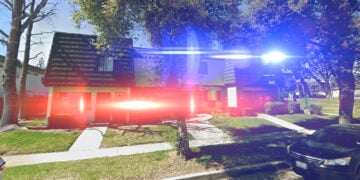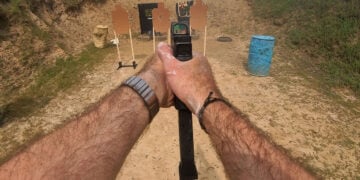In writing this article, I decided to do a bit of actual journalism. So I sat down for a couple of beers with two local firefighters. These folks are experienced; they’ve fought a lot of fire in houses and warehouses and on ships in our fair port city. Their knowledge is vast, and I’ll do my best to refine their view on home fire safety in this fairly short space.
First of all, they both stressed that fire safety in the home comes down to good old fashioned common sense. In short:
Don’t do stupid things that might result in a fire.
It sounds obvious, but it comes down to Farnham’s law for safety: don’t go to stupid places filled with stupid people doing stupid things. Apply this to your home safety plan and go in peace.
Both firefighters also stressed the importance of a family emergency plan. Know your exit routes, practice getting out of the house, and have a meeting place at a safe, nearby location. If nothing else, this ensures that you’ll all be safe in a fire or other emergency.
All firefighters involved in the conversation (and the significant other, who is a former 911 dispatch operator) were adamant about this next part. Once you’ve exited a burning building, do not go back in for any reason. Whatever, or sadly whoever, you forgot is best left to the professionals. Do a headcount, be safe, and give accurate information to the emergency crews when they arrive.
On the preventative side, our brave firemen pointed out that many house fires start when residents overload outlets, sockets, or power strips. It’s an easy mistake to make; we’ve all done it at Christmas or some other holiday requiring a great many lights. Don’t do it, not even just for an evening. It’s too easy to forget or let run too long. The average house fire lasts about an hour and can completely destroy the building. Don’t risk your home.
This next part just needs to be said: do not risk your life by attempting to “rescue” valuables. Your stuff is just that: stuff. It can be replaced, believe it or not, while your life is unique, and there’s no substitute for it. Think of yourself and your loved ones and get everyone out of the building as quickly as possible.
If, like most people who live in multi-story residences, you’ve located your bedrooms on an upper floor, make sure that you’ve got a way out. I grew up with an emergency ladder under my bed, and as an adult, it’s still part of my emergency plan to this day. Make sure every second-story bedroom has one, and that the occupants know how to use them.
Another obvious but oft-neglected point: your home needs at least one fire extinguisher and one smoke detector on each floor. Inspect both regularly; you need to change the batteries on the smoke detectors at least twice a year, and fire extinguishers do need to be replaced from time to time.
Top 5 Best Selling Fire Extinguishers
- First Alert Fire Extinguisher | Large Home Fire Extinguisher
- First Alert 1038789 Standard Home Fire Extinguisher, Red
- Amerex B500, 5lb ABC Dry Chemical Class A B C Fire Extinguisher (2)
- First Alert Fire Extinguisher | EZ Fire Spray Fire Extinguishing Aerosol Spray, Pack of 2, AF400-2
- Kidde FA110 Multi Purpose Fire Extinguisher 1A10BC, 2-pack
- First Alert HOME1 Rechargeable Home Fire Extinguisher 4-Pack, Red
We’ll talk about other issues relating to fire safety in future articles, but these tips are a great starting point for keeping your home and family safe. Implement them as soon as possible, and rejoice in your newfound peace of mind.









